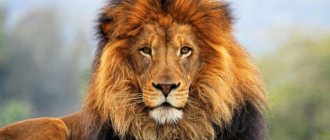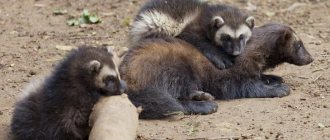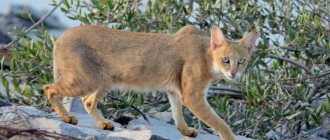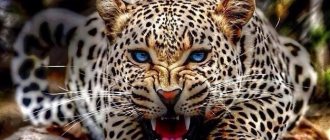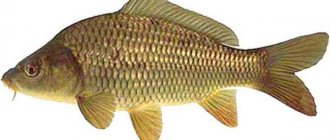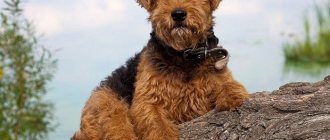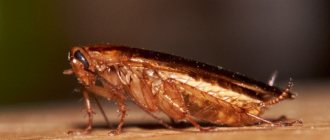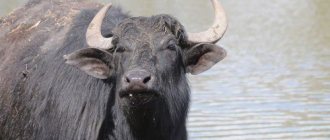- Wild animals
- >>
- Mammals
The African buffalo is a powerful, strong, and very formidable animal. In Africa, many people die every year as a result of buffalo attacks. These ungulates are second in power and danger only to the huge Nile crocodiles and hippopotamuses. It is worth noting that along with power and danger, he is quite vulnerable. It is the largest representative of all existing ungulates. African black buffaloes are also called Kaffir buffalos.
Description
The length of its body is about 3 meters, and its height can vary from 2 to 3. Large males weigh several centners, or even a ton. The animals have sickle-shaped horns. These are animals that almost always stick to the herd. There are usually about 30 buffaloes. Usually they are constantly in tension and try not to leave their relatives anywhere. In general, the buffalo is a very dangerous representative of the animal world. Even if he is wounded, he can suddenly attack, for example, jumping out of the bushes and knocking down a person. Moreover, it does not matter whether a person has a weapon, because it does not help in a conflict with an animal.
Record holder Lach
Arkansas had a record case in the 2000s. An African bull named Lach became famous for its incredible horns. The girth of the animal's horn exceeded 92 centimeters. The weight of each of them is 50 kilograms. The Guinness Book of Records recorded the record in 2003. In 2010, the bull Lach died during an illness.
Currently, the number of African Watussi is rapidly declining. This is primarily due to the fact that residents take all the milk from cows, leaving none for the young animals. The mortality of young individuals from hunger and malnutrition does not allow the population to grow at the required pace.
Tribal residents are gradually switching to keeping cows that produce the most milk.
Kinds
There are two types of buffalo: African and Indian. The first species is very massive and poses a greater danger than its Asian relative. The height of the animal at the withers is approximately two meters, and it weighs more than a ton.
African buffalo
The height of the Indian buffalo is within the same range as that of the African buffalo. Representatives of the subspecies also weigh about the same, but the body length of the herbivore is about 4 meters. The animal has horns, the length of which is approximately one and a half meters. The male's horns are crescent-shaped, while the female's are straighter.
Indian buffalo
Natural enemies
The main enemy of the African buffalo is the lion, which often attacks herds of these animals in a pride, and females and calves most often become their victims. However, lions try not to hunt adult large males if there is other potential prey.
Weakened animals and young animals also become victims of other predators: such as leopards or spotted hyenas, and crocodiles pose a danger to buffaloes at watering places.
Asiatic buffaloes are hunted by tigers, as well as marsh and saltwater crocodiles. Red wolves and leopards can also attack females and calves. And for Indonesian populations, in addition, Komodo dragons are also dangerous.
Return to content
Where does it live?
Buffaloes inhabit Africa, the part of it located south of the Sahara Desert. Today, these herbivores can be found in eastern Africa, where human influence on nature is minimal.
The animal can live in the tropics, at low altitude in the mountains, but the most comfortable place is the savannah. There is always food and water there. The latter is especially important, because it is vital for buffalo to have access to water. However, in such places buffaloes do not gather in large herds; this is possible only in specially protected areas.
What does it eat?
Buffaloes mainly eat grass, which contains protein. This is why animals spend a lot of time searching for food, even at night. Sometimes these solitary animals are attacked by predators such as lions. They look for very juicy grass, and therefore travel great distances. Often you have to deal with elephants for such food. Usually these elephant representatives are somewhere nearby. During times of drought, it is limited to small skirmishes, since the buffalo likes to eat the grass it wants. In such cases, these herbivores leave, leaving the conflict without development.
The most nutritious food for buffaloes grows during the rainy season. At this time, these animals begin to have cubs. They feel calm under the protection of their parents. In dangerous moments they always come to the rescue.
Nutrition
Buffaloes feed mainly in the early morning and late evening, with the exception of Anoa, which grazes only in the morning. The diet includes the following components:
- For Indian - large plants of the cereal family;
- For African - various greens;
- For dwarfs - herbaceous vegetation, shoots, leaves, fruits and even aquatic plants.
All buffalos have a similar digestion process to ruminants, where food is initially collected in the rumen of the stomach and semi-digested, regurgitated, then chewed again and swallowed again.
Interesting Facts
- American bison are very close relatives of buffalo.
- If people raise these animals, they do it for their milk.
- In the wild, buffaloes inhabit only Africa, Asia and Australia, where they were brought from India.
- Tamaraw are endemic and have almost disappeared, but a couple of hundred of these animals live in the Philippines.
- The taste of buffalo and cow's milk is similar.
- In the last century, Asiatic buffalo lived in Malaysia, but they have long disappeared from that area.
- Humans have domesticated Asian buffaloes, but African ones can only live in the wild.
- In Africa, more people die because of buffaloes than at the hands of other predators, not counting crocodiles.
- Asiatic buffalo prefer to eat aquatic plants, although this is not their entire diet.
- Buffaloes that are wounded may pretend to be dead, but then suddenly attack.
- Sometimes the horns are a meter apart from each other.
- These animals can move at a speed of about 50 km/hour.
- Buffaloes do not like to attack; they usually retreat, avoiding the enemy. However, when it comes to protecting the herd, males actively attack the enemy.
- Ernest Hemingway loved to describe buffalo hunting in his works.
Advantages and Disadvantages of Buffaloes
Traditionally, the term “cattle” refers to ordinary cows and bulls, but the domesticated buffalo also belongs to this category of farm animals. And since cows are the main representative of this group, it makes sense to compare the advantages and disadvantages of buffaloes in relation to them.
The obvious advantages are:
- High fat content of milk. The average fat content is just over 8%, and if certain feeding rules are followed, this figure can easily be increased to 10% or more. Thus, buffalo milk is an ideal raw material for the production of butter and cheese. If 30-35 liters of cow's milk are needed to produce 1 kg of butter, then only 10-15 liters of buffalo milk are needed. Thus, the low milk yield of buffaloes is fully compensated
- Undemanding to feed. Cheap roughage, which is not suitable for cows, is readily eaten by buffaloes, which significantly reduces the cost of their maintenance. Especially in winter.
- Good health. Buffaloes are significantly less susceptible to infectious diseases of cattle. In addition, they can live in humid, hot climates, making them a preferred cattle species in marshy areas. Especially in the south of the country.
However, the significantly greater popularity of cows in Russia has quite objective reasons. Buffaloes have a number of significant disadvantages, due to which the vast majority of farmers prefer cows:
- Small milk yield. Under similar housing and nutrition conditions, buffaloes produce 2-3 times less milk than meat and dairy cows, and 4-6 times less than dairy cows.
- Tasteless meat. Although over the past decades, breeders have developed new breeds of buffalo, in which the taste characteristics of the meat have been significantly improved, beef is still much tastier.
- Complex nature. According to reviews of many cattle breeders who have experience in breeding buffaloes, these animals are still more capricious and capricious than cows.
Lifestyle
Usually buffalos graze at night; during the day, animals are usually found near the water, near a swamp or a small watering hole, since the temperature there is low. At this time, animals sleep or chew grass. They often hide from the sun in a hole or puddle. A buffalo requires about 40 liters of water per day. That is why these herbivores do not move far from the water.
As for danger, in this regard females are always on guard. They worry, and in moments of danger they raise their heads. Sometimes any sound, even a very quiet one, is enough for the animals to quickly retreat. They are capable of running at a speed of about 50 kilometers per hour.
There is a national park in Tanzania and a lot of buffalo live there. There are many pastures here, which are located next to the lake and mountains. Sometimes there are individuals that do not gather in herds and live separately on the slopes of the mountains. In their case, huge horns are a guarantee of safety.
It is noteworthy that the most important decisions are usually made by females. During lunch the herd sleeps. Sometimes the most important females get up and take a comfortable position, and the rest of the animals repeat after them. Around then it is also time for hygiene maintenance procedures. Woodpeckers or herons help the animals in this, but in return they require insects that accumulate in the wool of buffaloes. This is how these birds control the reproduction of parasites that carry dangerous diseases. These herbivores have very strong immunity, but sometimes weak individuals still suffer from parasites.
Lifestyle
In their life cycle, animals adhere to the following daily routine: during hot hours they stand under the shade of branchy trees or lie in mud pits, and with the onset of dusk and coolness they begin to graze, greedily eating grass.
Every day, African buffalos arrange a watering hole for themselves. According to some reports, they can drink up to forty liters per day, and never go further than four kilometers from bodies of water.
They do not like to be deep in water, although they swim very well - during the migration period, wild bulls can swim across fairly wide rivers.
Buffaloes are always on guard, especially females, when grazing with calves. Their favorite pose is their head raised up with their horns thrown back.
As noted above, the skin and wool of buffaloes are very often attacked by parasites - gadflies, ticks, flies, etc. Therefore, on the backs of animals you can often see all kinds of birds that peck insects and their larvae from the fur. However, this does not always help. Pests can accumulate in places inaccessible to feathered rescuers - on the belly, between the horns, in the groin. Thus, they cause wild pain to the bulls.
The lifespan of wild buffaloes rarely reaches twenty years, although in zoos and nurseries they can live up to twenty-five or more.
Breeding offspring
Often, single males stay close to the herd to produce offspring. The female can do this once every two years. She carries the cubs for a year, and then feeds them for another year. If there is a calf next to the mother, then she will not soon be able to bear and feed another baby again. Sometimes males don't look at this and are cruelly rejected.
During the rains, herds with many young animals migrate, constantly crossing water spaces. It is very common for calves to drown or get lost. Then it is difficult for them to find the mother in the herd, and she herself does not even try to look for him - she easily accepts this situation.
Buffalo with baby
Calves usually immediately stand up and follow their mother. Although not everyone has the strength to do this. To overcome obstacles and walk long distances, you need to eat a lot of nutritious food, which is the female’s milk. It contributes to the development of the baby, and not only gives strength.
Reproduction
The mating season begins at the end of March. We have already written about clashes between relatives; all that remains is to add that he can take out his brutality not only on opponents, but also on foreign objects, such as bushes, trees, etc. The female carries her future offspring in the womb for more than 300 days. Mass calving of females occurs in February.
They try to isolate themselves from the main eyes of the herd, finding a warm place where they bring offspring. There is 1 calf in a litter, but there are exceptions to the rules, although it is very rare when a female can give birth to twins.
After birth, heifers weigh from 45 to 55 kg. After about twenty minutes, the newborn can follow his mother. At first, he is fed with fatty and nutritious milk; he can drink more than 5 liters a day. It begins to chew grass at one month of age. Reaches sexual maturity by five years.
Male buffaloes leave their home after three years, but females remain forever faithful to their herd in which they were born. Adult females give birth each season, but only 25 percent of the total calves survive.
The role of males
Buffaloes love to take mud baths, as mud helps get rid of parasites and ticks that suck blood. A bull that has just joined the herd is very active. He tends to pay more attention to females who are ready to mate. The female chooses a buffalo based on status and leaves if an unsuitable candidate appears.
Then the bull should carefully monitor other males, who can be strong opponents. Usually there are no special battles, since the status in the herd is determined only once - in youth. One of the main responsibilities of a bull is to monitor movement in the grass, because if he notices something suspicious, he must immediately begin to protect the herd.
Features of keeping buffaloes
According to the conditions of detention, the Asian black buffalo is as close as possible to an ordinary cow. He grazes on the same pastures, lives in an ordinary cowshed and, in general, differs little from a cow. At the same time, among cattle breeders there were two diametrically opposed opinions regarding the nature of buffaloes.
Some argue that buffaloes are incredibly capricious and even aggressive: they recognize only one owner and allow themselves to be milked only by him. But even a beloved owner often has to persuade his ward to share milk. Others, on the contrary, argue that buffaloes are much more obedient than cows, and they become even more attached to their owner than dogs.
Both the Indonesian dwarf buffalo and the domesticated Indian buffalo readily eat the coarsest and least valuable feed, which is usually unsuitable for cows. For example, straw and corn stalks can be fed to these animals. In addition, recall that domestic buffaloes are called “river type.” They can be safely grazed in marshy and wooded pastures where regular cows are not grazed. Buffaloes are very fond of coastal vegetation (reeds, sedges), and also eat nettles, ferns and even pine needles without any problems.
In swampy areas, where it is difficult to raise ordinary cattle, buffaloes feel very comfortable. Moreover, if there is at least a small body of water nearby, they will willingly swim in it in the summer heat.
It is believed that buffaloes tolerate cold well, but given the southern origin of this species, this should not be abused. In regions with cold winters, animals definitely need a warm permanent barn.
